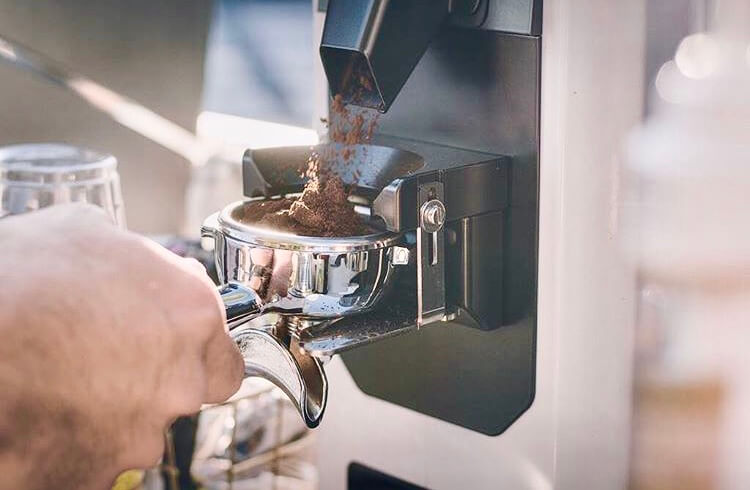Understanding Coffee Beans: the Trip From Espresso to Blended Coffee Beans

The Origins of Coffee: A Global Point Of View
While you may think of coffee as a contemporary staple, its beginnings map back centuries, intertwining with cultures around the world. The story begins in Ethiopia, where legend states a goat herder named Kaldi found the stimulating impacts of coffee beans after noticing his goats romping energetically after consuming them. This sparked rate of interest, resulting in coffee's spread to Arab investors that treasured the made beverage. By the 15th century, it got to Persia, Egypt, and Turkey, where coffee shops became social hubs for conversation and culture.
As trade paths broadened, coffee made its method to Europe in the 17th century, promptly gaining popularity. Each culture added its one-of-a-kind spin to coffee prep work, enhancing its background.
Growing and Harvesting of Espresso Beans
As coffee's trip advanced, the emphasis shifted to the farming and harvesting of specific bean ranges, especially those made use of for coffee. You'll find that coffee beans usually come from Arabica or Robusta plants, each offering distinctive flavors. The suitable growing problems include high elevations and abundant, well-drained soil, which enhance the beans' quality.
During the harvest, picking methods vary. In some areas, employees hand-pick ripe cherries, guaranteeing only the most effective fruit mosts likely to handling. In various other locations, mechanical farmers are utilized, specifically on bigger ranches. Timing is important; you desire to collect when the cherries get to peak perfection for maximum taste.
When gathered, the beans are planned for processing, which is necessary in identifying their final preference. Recognizing the farming and gathering processes gives you understanding right into what enters into your favorite espresso, improving your recognition for each mug.
Handling Techniques: From Cherry to Bean
Since you've learnt more about collecting coffee beans, let's check out how those cherries change into the coffee beans you love. You'll see just how different harvesting techniques effect taste, adhered to by the vital actions of fermentation and drying. Ultimately, we'll damage down the milling and grading procedure that establishes your coffee's high quality.
Collecting Methods Clarified
When it pertains to coffee, recognizing harvesting methods is essential, considering that they directly affect the taste and high quality of the beans you take pleasure in. There are 2 primary techniques: discerning picking and strip picking. Discerning selecting includes hand-picking just ripe cherries, ensuring you obtain the finest top quality beans. This method usually results in a richer flavor account, though it's even more labor-intensive. On the other hand, strip picking methods gathering all cherries at the same time, despite ripeness. While it's quicker and cheaper, this can result in a mix of flavors, impacting the last item. Inevitably, the selection of gathering technique can considerably influence your coffee experience, so it deserves knowing how those beans made it to your cup.
Fermentation and Drying
After collecting, the next action in handling coffee beans play a considerable duty in forming their flavor. You'll find that fermentation is vital, as it assists damage down the mucilage surrounding the beans, enhancing their taste account. Relying on the approach, this process can last from a couple of hours to several days, with varying results based on temperature level and moisture.
Once fermentation is complete, drying adheres to, which is equally essential. You can pick from mechanical or sun-drying drying approaches. Sun-drying allows the beans to take in flavors from the atmosphere, while mechanical drying warranties regular wetness levels no matter weather condition. Proper drying out is vital to prevent mold and preserve the beans' quality, ultimately influencing your mug of coffee.
Milling and Grading Refine
As fermentation and drying out set the stage for flavor advancement, the milling and grading process assurances that just the very best coffee beans make it to your mug. This stage involves getting rid of the outer layers of the coffee cherry, including the parchment and husk. After milling, the beans are sorted by size and weight, making certain a consistent high quality. You'll discover that grading aids determine defects and categorize beans, which affects taste and aroma. Top notch beans obtain a greater quality, causing a richer coffee experience. As soon as rated, the beans await packaging and shipping, preserving their unique qualities. This thorough procedure is important for delivering the remarkable taste you appreciate in every sip of your SOE favored brew.
Roasting Techniques: Unlocking Flavor Prospective
When you roast coffee beans, the technique you pick can significantly impact the flavor account. Comprehending the relationship between time, temperature, and toasting strategies is vital to exposing the potential of your brew. Let's explore exactly how these aspects collaborated to develop the perfect mug.
Roasting Approaches Described
While you could believe that all coffee toasting methods produce the same outcomes, the fact is that each technique exposes unique flavor capacities in the beans. You can pick between approaches like drum roasting, air roasting, and even standard frying pan roasting. Drum toasting utilizes a turning drum to evenly disperse warm, boosting caramelization and creating a balanced taste. Air roasting, on the various other hand, distributes warm air around the beans, advertising a lighter roast with pronounced acidity. Frying pan toasting allows for hands-on control but requires constant interest to stay clear of burning. Each technique has its subtleties, so trying out with various strategies can aid you uncover the perfect roast that straightens with your preference preferences. Delight in the journey of discovering your optimal mug!

Impact on Flavor Account
Different toasting approaches not only affect the process however also considerably influence the taste account of the coffee beans. Dark roasts, on the various other hand, bring out strong, great smoky tastes, often covering up the bean's unique attributes. Understanding these nuances assists you value the artistry behind your cup of coffee, boosting your overall experience with every sip.
Time and Temperature Aspects
To launch the complete taste potential of coffee beans, both time and temperature level throughout the toasting process play considerable roles. When roasting, you'll locate that higher temperatures can rapidly establish flavors, yet if you hurry it, you may end up with charred notes. On the other hand, lower temperatures permit an extra steady flavor development, showcasing the beans' special attributes.

Timing is simply as essential; expanding the roast as well long can lead to a loss of acidity and brightness, while also short a roast could leave the beans underdeveloped. Finding that pleasant area calls for practice and trial and error. By changing these variables, you can expose the rich, complex flavors concealed within each bean, creating a genuinely impressive coffee experience.
The Art of Mixing: Crafting Distinct Coffee Accounts

Begin by picking a base coffee that gives a solid structure. A bright Ethiopian bean can bring fruitiness, while a rich Brazilian coffee adds body.
As you mix, maintain in mind that each mix narrates. You're not simply making coffee; you're developing an experience. So, take your time, taste frequently, and delight in the journey of finding your trademark mix.
Brewing Methods: How Prep Work Influences Taste
Mixing coffee opens up a domain of taste opportunities, yet just how you make that mix can considerably influence your final cup. Different brewing methods draw out unique flavors and fragrances, so it's essential to choose wisely. As an example, a French press allows sediments and oils to remain, creating a rich, robust experience. On the other hand, a pour-over highlights the coffee's quality and illumination, excellent for showcasing delicate notes.
Espresso, with its high stress, creates a concentrated shot that highlights sweetness and crema. If you favor a lighter brew, consider a cold mixture technique; it produces a smooth, much less acidic taste.
Inevitably, experimentation is vital. Changing variables like water temperature level, grind size, and make time can change your coffee's profile. So, embrace the art of developing to find the flavors concealed in your coffee blends. The right method can raise your experience to brand-new heights.
The Future of Coffee: Sustainability and Advancement
As the coffee sector develops, sustainability and technology are becoming crucial for dealing with ecological challenges and conference customer needs. You'll notice that even more coffee firms are taking on green methods, from sourcing beans ethically to executing lasting farming strategies. These changes not just assist the planet yet also improve the high quality of the coffee you enjoy.
You could see innovations like biodegradable product packaging and water-saving developing techniques that minimize waste. Advanced modern technology, such as blockchain, is likewise ending up being popular, making sure transparency in the supply chain, which enables you to trace your coffee back to its beginnings.
Additionally, spending in regional areas and supporting farmers via reasonable trade efforts fosters a much more sustainable coffee environment. As you sip your next cup, bear in mind that your options can add to a brighter future for coffee. By selecting sustainable brand names, you're not just enjoying a drink; you're making a positive impact on the globe.
Regularly Asked Inquiries
What Is the Distinction Between Arabica and Robusta Beans?
Arabica beans are smoother, sweeter, and have a greater level of acidity, while robusta beans are more powerful, more bitter, and consist of even more high levels of caffeine. You'll discover these differences in taste and scent when brewing your coffee.
Exactly How Does Altitude Affect Coffee Bean Taste?
Altitude influences coffee bean taste substantially. Higher altitudes generate beans with brighter acidity and complicated flavors, while reduced altitudes usually produce beans that are heavier and much less nuanced. You'll observe these distinctions in your mug!
What Are the Health Conveniences of Drinking Coffee?
Consuming coffee can enhance your energy, improve mental focus, and also improve physical efficiency. It's rich in antioxidants, might lower the risk of certain conditions, and can advertise a much healthier metabolic rate when consumed in moderation.
Can Coffee Beans Be Recycled for Brewing?
Yes, you can reuse coffee beans for brewing, yet the taste might be weak. If you enjoy trying out, try reusing them in various methods, like cool brews or including in smoothies for an added kick.
Exactly how Should I Shop Coffee Beans for Freshness?
To keep your coffee beans fresh, keep them in an airtight container in a trendy, dark place. Avoid exposing them to dampness, light, or warm, as these aspects can promptly degrade their taste and fragrance.
Understanding Coffee Beans: the Trip From Coffee to Blended Coffee Beans.
Currently that you have actually found out regarding gathering coffee beans, allow's check out just how those cherries transform into the coffee beans you love.When you roast coffee beans, the method you select can drastically affect the flavor profile - Single Origin Espresso.While you might believe that all coffee roasting approaches produce the exact same results, the reality is that each strategy reveals one-of-a-kind taste potentials in the beans.Different toasting approaches not only influence the procedure yet also considerably impact the taste account of the coffee beans